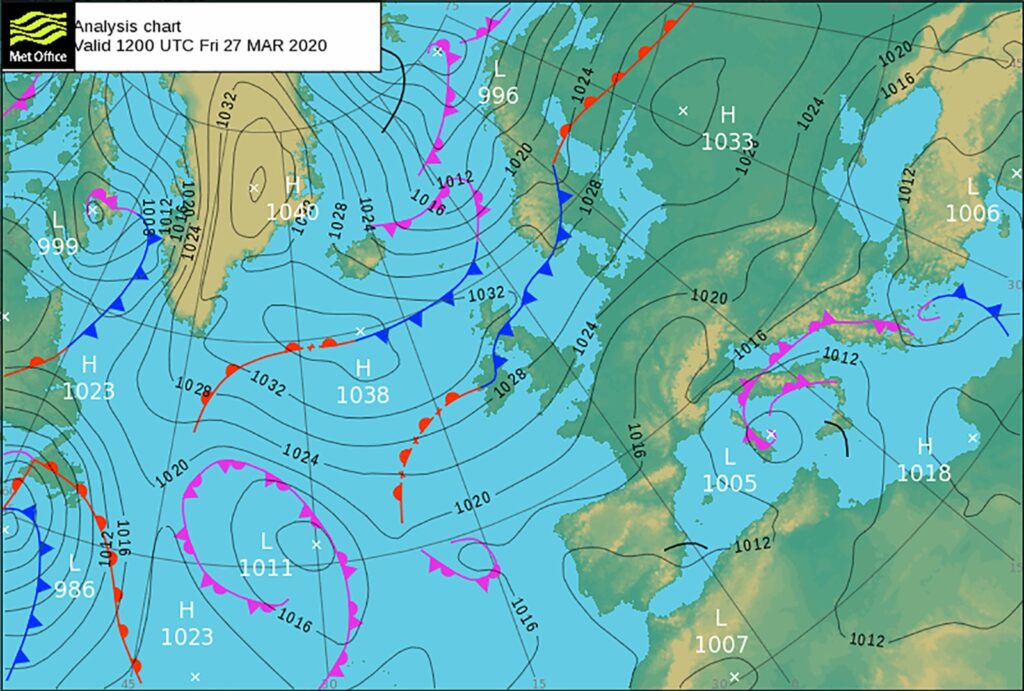The weather is the state of the atmosphere, including temperature, humidity, precipitation, and other atmospheric conditions, at a specific place and time.
____________________
Instruções:
Essas aulas de inglês são para alunos intermediários e avançados de inglês como segunda língua. Eles incluem “Ler”, “Ouvir” e “Escrever”. Basta seguir a lição respondendo às perguntas à medida que as encontra.

Todas as vagas em negrito devem ser traduzidas para seu próprio idioma para ajudar na compreensão do novo vocabulário.
Please LIKE & SUBSCRIBE to my Youtube channel https://www.youtube.com/c/SteveBradeley/videos
MY AMAZON BOOKSTORE PROFILE
CLICK HERE TO READ THE NEWSLETTER
Studying the weather in English
Introduction:
The weather is the state of the atmosphere, including temperature, humidity, precipitation, and other atmospheric conditions, at a specific place and time. It can vary greatly from one location to another and can change quickly over short periods of time. The weather can be affected by a number of factors, including the Earth’s atmosphere, the Sun, and the movement of the Earth around the Sun. It is an important factor in many aspects of daily life, including agriculture, transportation, and outdoor activities.
NEW VOCABULARY: state of the atmosphere, humidity, precipitation, affected, a number of factors, many aspects agriculture, transportation, outdoor activities
Listen & Read Section (listen to the audio whilst reading during your home study period)
Common weather words:
Forecasting Seasons Wind Snow Ice Rain Sun
weather, rain, cloud, rainbow, temperature, pressure, overcast, shower, sunrise, dry, tornado, sunset, humidity, cold, heat, wind, cloudy, heat wave, fog, breeze, humid, lightning, blustery, humidity, thunder, snow, heat index, thunderstorm, downpour, drought, tropical, water cycle, temperate, moisture, drizzle, warm, hail, icicle, climate, storm, flood, muggy, gale, flash flood, atmosphere, cold front, mist, isobar, cold snap, condensation, forecast, ice, freeze, barometric, gust, snowfall, whirlwind, hurricane, cyclone, air, balmy, avalanche, air pressure, frost, blizzard, spring, smog, ozone, autumn, winter, outlook, summer, storm surge, rain gauge, low pressure, wind chill, sleet, sky, easterlies, westerlies, dew, surge, monsoon, permafrost.
Section One
Weather forecasting, the prediction of the weather through application of the principles of physics, supplemented by a variety of statistical and empirical techniques. In addition to predictions of atmospheric phenomena themselves, weather forecasting includes predictions of changes on Earth’s surface caused by atmospheric conditions—e.g., snow and ice cover, storm tides, and floods.
NEW VOCABULARY: Weather forecasting, through application of the principles of physics, a variety of statistical and empirical techniques, phenomena, weather forecasting, storm tides, and floods.
Listen & Read Section (listen to the audio whilst reading during your home study period)
Listening Section (Video one)
Watch the video and answer the questions below the video
Questions
-
-
-
- How does the Earth lose its heat?
- Explain where the heat escapes to.
- What effect does the Earth’s ’tilt’ have on the distribution of heat from the sun?
- What happens to the barometric pressure as the air is rising?
- What happens to the barometric pressure as the air is coming down?
-
-
NEW VOCABULARY: heat, escape, tilt, barometric, pressure
Section Two
Measurements and ideas as the basis for weather prediction
The observations of few other scientific enterprises are as vital or affect as many people as those related to weather forecasting. From the days when early humans ventured from caves and other natural shelters, perceptive individuals in all likelihood became leaders by being able to detect nature’s signs of impending snow, rain, or wind, indeed of any change in weather. With such information they must have enjoyed greater success in the search for food and safety, the major objectives of that time.
NEW VOCABULARY: observations, enterprises, vital, ventured, natural shelters, perceptive, likelihood, impending such
Listen & Read Section (listen to the audio whilst reading during your home study period)
Section Three
In a sense, weather forecasting is still carried out in basically the same way as it was by the earliest humans—namely, by making observations and predicting changes. The modern tools used to measure temperature, pressure, wind, and humidity in the 21st century would certainly amaze them, and the results obviously are better. Yet, even the most sophisticated numerically calculated forecast made on a supercomputer requires a set of measurements of the condition of the atmosphere—an initial picture of temperature, wind, and other basic elements, somewhat comparable to that formed by our forebears when they looked out of their cave dwellings.
NEW VOCABULARY: a sense, modern tools, humidity, amaze, obviously, Yet, sophisticated numerically calculated forecast a set of measurements, an initial picture, basic elements, forebears, cave dwellings.
Listen & Read Section (listen to the audio whilst reading during your home study period)
Listening Section 2 (The weather Girl)
The primeval approach entailed insights based on the accumulated experience of the perceptive observer, while the modern technique consists of solving equations. Although seemingly quite different, there are underlying similarities between both practices. In each case the forecaster asks “What is?” in the sense of “What kind of weather prevails today?” and then seeks to determine how it will change in order to extrapolate what it will be. 
NEW VOCABULARY: primeval, approach, entailed, insights, accumulated, perceptive observer, consists of, solving equations, seemingly, underlying similarities, prevails, extrapolate.
Listen & Read Section (listen to the audio whilst reading during your home study period)
Listening Section (Video two)
Watch the video and answer the questions below the video
Questions
-
-
-
- What are the names of the three characters in the movie?
- What are Chester’s plans for the weekend?
- What kind of barometric pressure do they have today?
- What kind of weather can we expect on Wednesday and what does that mean?
- What kind of conditions can we expect next Friday and Saturday?
-
-
NEW VOCABULARY:
Listen & Read Section (listen to the audio whilst reading during your home study period)
Section Four
Because observations are so critical to weather prediction, an account of meteorological measurements and weather forecasting is a story in which ideas and technology are closely intertwined, with creative thinkers drawing new insights from available observations and pointing to the need for new or better measurements, and technology providing the means for making new observations and for processing the data derived from measurements.
NEW VOCABULARY: observations, critical, an account of, meteorological measurement, closely intertwined, creative thinkers, drawing new insights, derived
Listen & Read Section (listen to the audio whilst reading during your home study period)
The basis for weather prediction started with the theories of the ancient Greek philosophers and continued with Renaissance scientists, the scientific revolution of the 17th and 18th centuries, and the theoretical models of 20th- and 21st-century atmospheric scientists and meteorologists. Likewise, it tells of the development of the “synoptic” idea—that of characterizing the weather over a large region at exactly the same time in order to organize information about prevailing conditions.
NEW VOCABULARY: weather prediction, ancient Greek philosophers, Renaissance scientists, theoretical models, “synoptic”, characterizing, prevailing conditions.
Listen & Read Section (listen to the audio whilst reading during your home study period)
In synoptic meteorology, simultaneous observations for a specific time are plotted on a map for a broad area whereby a general view of the weather in that region is gained. (The term synoptic is derived from the Greek word meaning “general or comprehensive view.”) The so-called synoptic weather map came to be the principal tool of 19th-century meteorologists and continues to be used today in weather stations and on television weather reports around the world.
NEW VOCABULARY: synoptic, meteorology, simultaneous, observations, gained, derived from, Greek comprehensive view, so-called ,
Listen & Read Section (listen to the audio whilst reading during your home study period)
Section Five
Practical applications
Systematic weather records were kept after instruments for measuring atmospheric conditions became available during the 17th century. Undoubtedly these early records were employed mainly by those engaged in agriculture. Planting and harvesting obviously can be planned better and carried out more efficiently if long-term weather patterns can be estimated.
NEW VOCABULARY: Systematic, instruments, atmospheric conditions, Undoubtedly, early records, engaged in agriculture, planned, long-term, weather patterns
Listen & Read Section (listen to the audio whilst reading during your home study period)
In the United States, the foundations of the national weather services were laid down by American physicist Joseph Henry, the first head of the Smithsonian Institution. In 1849 Henry created a network of volunteer weather observers to help improve storm prediction in the U.S. The first national weather services were provided by the U.S. Army Signal Corps beginning on February 9, 1870, which also incorporated Henry’s volunteer weather observers by 1874.
NEW VOCABULARY: foundations, national weather services, laid down, volunteer, incorporated, volunteer
Listen & Read Section (listen to the audio whilst reading during your home study period)
These operations were taken over by the Department of Agriculture in 1891. By the early 1900s free mail service and telephone were providing forecasts daily to millions of American farmers. The U.S. Weather Bureau established a Fruit-Frost (forecasting) Service during World War I, and by the 1920s radio broadcasts to agricultural interests were being made in most states.
NEW VOCABULARY: operations, Bureau, Fruit-Frost(forecasting) Service, radio broadcasts
Listen & Read Section (listen to the audio whilst reading during your home study period)
Listening Section (Video three)
Watch the video below about the five day forecast and then follow the instructions in the writing exercise.
Writing Exercise:
Write a five-day weather forecast for your region. You must use at least 10 of the vocabulary in section ‘Common Weather‘ words in the introduction section. You must use two words from each coloured section. Minimum word count is 100.
Grammar to use: Use two examples of the Active and Passive Voice. See the lessons below as a reminder.
The Active and Passive Voice Lesson
Active & Passive Voice Audio Lesson


